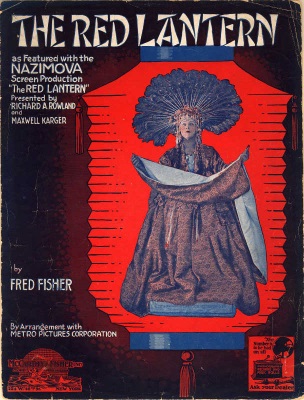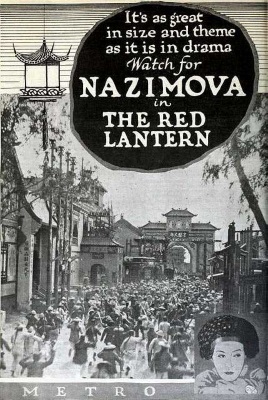An intriguing silent film
on a few levels. The West has always had a fascination for the East - for
the exotic, the unknown. the Orientalism - but at the same time went by Kipling's
maxim - "The East is East and the West is West and never the twain shall
meet". In America this led to immigration laws that excluded Asians - and
in entertainment audiences preferred that displays of Orientalism be acted
by whites in yellowface. Yellowface in the theater goes back a few hundred
years - think of all the operas and musicals of Madame Butterfly - and this
transitioned into film fairly naturally. Asians - even in yellowface - were
generally stereotyped as scoundrels, servants and vamps - so it is interesting
that this film doesn't really go there though there is plenty of yellowface.
Setting a film in Peking during the Boxer Revolution and making the racial
divide between the Chinese and whites the main emphasis of the story strikes
me as an interesting choice in 1919. It is difficult to really know where
the filmmakers fall on this - at times they seem to be condemning it, at
others accepting it.
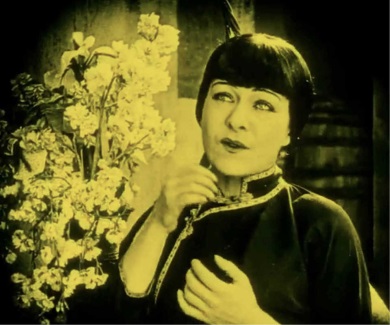
Mahlee is of mixed race - her father is an English General, her mother Chinese.
When the mother died in childbirth, the General left money with the grandmother
and disappeared. Mahlee is played by one of the more fascinating figures
in the silent film era, Alla Nazimova - credited only as Nazimova. She was
born in Russia, became a star in the theater but came to America and in a
matter of months learned English well enough to star on Broadway. She didn't
get into films till she was 37 years old in 1916 and was soon a star. Her
flamboyant lifestyle and sexual preferences were well-known. She had lesbian
parties and came up with the term "sewing circle" to infer lesbians. She
also produced, wrote and directed films and retired in 1927 to go back to
theater. Most of her films are lost but the two biggest successes Camille
and Salome have survived. By the time of this film, she was 40 and in truth
is too old to play her role of an innocent young woman.
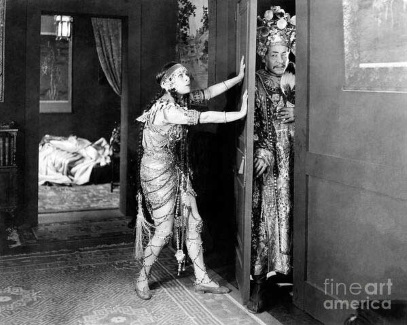
Mahlee is shunned by the Chinese who make fun of her big feet - her father
forbid the grandmother to bind her feet - and the grandmother says things
like "In your veins is the blood of a foreign Mandarin devil". When grandma
is on her death bed, she demands that Mahlee cut off her big feet so that
the old lady can go to heaven. As she begins to cut them, the old lady kicks
the bucket and Mahlee faints. She is taken in by a Christian mission and
soon converts and falls in love with the white son. One of the family's friends
is Sam Wong (Noah Beery) who loves her but goes off to America to study.
In America he is rejected socially and comes back a Boxer wanting to kill
all the foreigners. Go for it, I say. He too as he tells her "is a cursed
mixture of white and yellow". Mahlee has to decide which side to be on. It
all comes to a head on the day of the Lantern Festival.
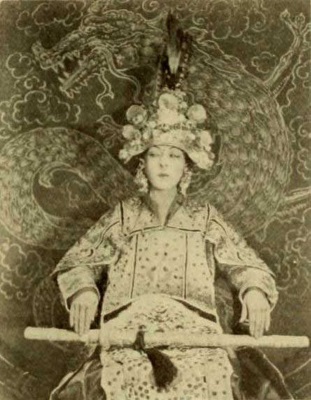
The film designers did a great job here. There is one street that looks like
it came right out of a Chinese film circa 1920 and the décor in the
homes and temple is filled with Chinese artifacts and decorations. Near the
end of the film the Boxers show up in Peking but so do the Allied soldiers
and there are some solid street scenes of the fighting. Over-all though,
it is slow and predictable (of interest the Hays Code forbid actors of different
races to be romantically involved) and Nazimova really overacts with her
eyes - more suited to the stage than the screen. One of the Lantern girls
is Anna May Wong in her debut, but I could not pick her out.
